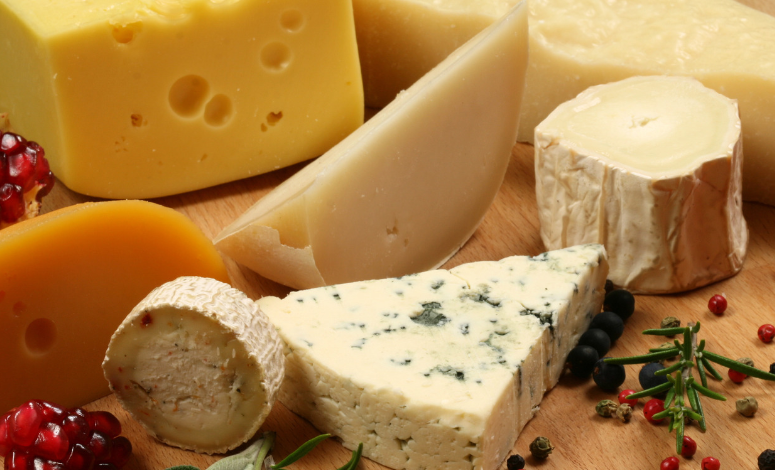Celebrating Cheese Day: A Tribute to the World’s Favorite Dairy Delight

June 4th is Cheese Day, a celebration dedicated to one of the most beloved and versatile foods in the world. Cheese has been a staple in human diets for thousands of years, and its rich history and diverse varieties make it a favorite for many. From classic cheeses like cheddar and mozzarella to gourmet varieties like brie and gouda, there’s a cheese for every palate. This article explores the history of cheese, popular types of cheese, and simple ways to enjoy cheese, including vegetarian and vegan options.
The History of Cheese
- Ancient Beginnings
- Origins: Cheese is believed to have been discovered around 8000 BC when sheep were first domesticated. The exact origins are unclear, but it’s thought that cheese was discovered accidentally when milk was stored in containers made from animal stomachs, causing it to curdle and separate into curds and whey.
- Early Production: Early cheese-making techniques involved fermenting milk using natural bacteria and enzymes from animal stomachs. These primitive methods laid the foundation for the diverse cheese-making traditions we see today.
- Medieval Innovations
- Monastic Contributions: During the Middle Ages, European monasteries became centers of cheese production. Monks developed and refined many traditional cheese varieties, such as brie, camembert, and parmesan.
- Regional Specialties: Different regions began to develop their own unique cheeses, influenced by local climates, cultures, and resources. This period saw the creation of many classic European cheeses that are still popular today.
- Modern Advancements
- Industrialization: The industrial revolution brought significant advancements in cheese production, with the development of modern dairy farming, pasteurization, and standardized cheese-making processes.
- Global Spread: Today, cheese is produced and enjoyed worldwide, with each region contributing its own distinctive flavors and techniques to the global cheese repertoire.
Popular Types of Cheese
- Cheddar
- Description: Cheddar is a hard, aged cheese that originated in England. It has a sharp, tangy flavor that becomes more pronounced with age.
- Uses: Cheddar is versatile and can be used in sandwiches, burgers, mac and cheese, and cheese boards.
- Mozzarella
- Description: Mozzarella is a soft, white cheese from Italy, known for its mild flavor and stretchy texture.
- Uses: Mozzarella is essential for pizzas, caprese salads, and lasagna.
- Brie
- Description: Brie is a soft, creamy cheese with a white, edible rind. It hails from France and has a mild, buttery flavor.
- Uses: Brie is delicious on crackers, in baked dishes, and paired with fruits and nuts.
- Gouda
- Description: Gouda is a semi-hard cheese from the Netherlands, with a rich, creamy texture and a slightly sweet, nutty flavor.
- Uses: Gouda is perfect for cheese boards, grilled cheese sandwiches, and melting over vegetables.
- Parmesan
- Description: Parmesan, or Parmigiano-Reggiano, is a hard, granular cheese from Italy, known for its strong, savory flavor.
- Uses: Parmesan is ideal for grating over pasta, salads, and soups.
Simple Ways to Enjoy Cheese
- Cheese and Fruit Platter
- Ingredients: A selection of cheeses (cheddar, brie, gouda), fresh fruits (grapes, apples, pears), nuts, and honey.
- Preparation: Arrange the cheeses on a platter with sliced fruits, nuts, and a drizzle of honey. This simple yet elegant platter is perfect for snacking or entertaining.
- Grilled Cheese Sandwich
- Ingredients: Slices of cheddar or gouda, bread, butter.
- Preparation: Butter the bread slices and place the cheese in between. Grill in a pan over medium heat until the bread is golden brown and the cheese is melted. Serve with tomato soup for a classic comfort meal.
- Caprese Salad
- Ingredients: Fresh mozzarella, tomatoes, fresh basil, olive oil, balsamic vinegar, salt, and pepper.
- Preparation: Slice the mozzarella and tomatoes. Arrange them on a plate with basil leaves. Drizzle with olive oil and balsamic vinegar, and season with salt and pepper.
Vegetarian and Vegan Cheese Options
- Vegetarian Cheeses
- Rennet-Free Cheeses: Look for cheeses labeled as vegetarian, which are made without animal rennet. Many popular cheese brands offer rennet-free options, including cheddar, mozzarella, and gouda.
- Vegan Cheeses
- Nut-Based Cheeses: Vegan cheeses made from cashews, almonds, or other nuts have become increasingly popular. These cheeses can range from soft, spreadable varieties to hard, aged cheeses.
- Soy-Based Cheeses: Soy-based cheeses, such as tofu-based feta or cheddar, offer a dairy-free alternative that melts and tastes similar to traditional cheese.
- Recipe Idea – Vegan Cheese Sauce:
- Ingredients: 1 cup raw cashews, 1/4 cup nutritional yeast, 1 cup water, 1 tablespoon lemon juice, 1 teaspoon garlic powder, 1 teaspoon onion powder, salt to taste.
- Preparation: Soak the cashews in water for at least 4 hours. Drain and blend with the remaining ingredients until smooth. Use as a sauce for pasta, nachos, or vegetables.
Cheese Day is a delightful occasion to celebrate the rich history and diverse varieties of cheese. Whether you prefer classic favorites like cheddar and brie or are exploring vegetarian and vegan options, there are endless ways to enjoy cheese. From simple platters to creative dishes, cheese adds a touch of flavor and sophistication to any meal. This June 4th, take the opportunity to indulge in your favorite cheeses and discover new ones to love.





